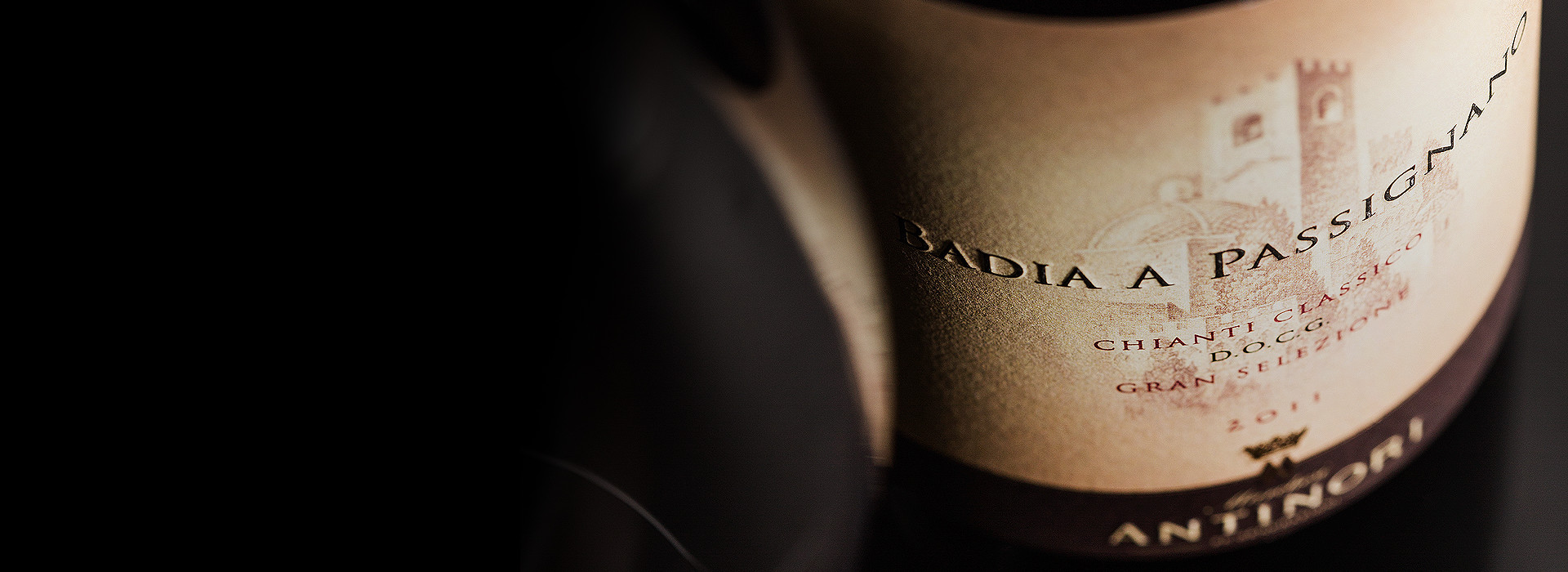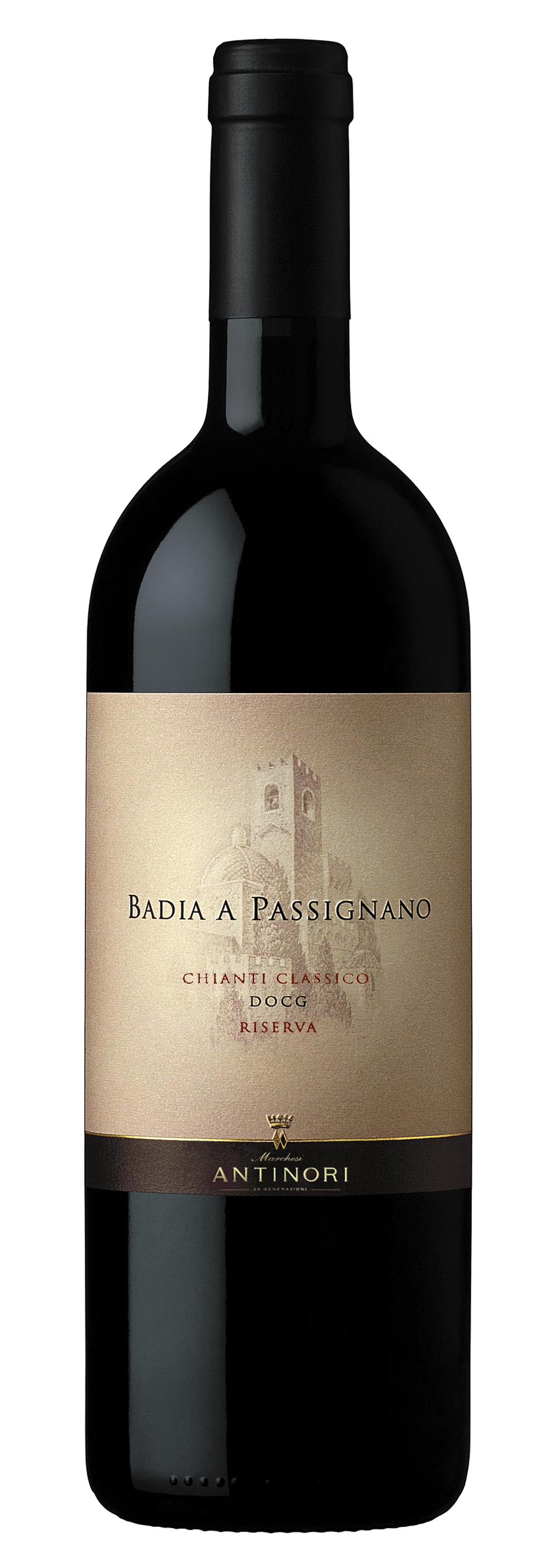Tasting Notes

Climate
The growing season was marked by a particularly dry and mild winter which led to a very early bud break and accelerated subsequent phases of plant development. The early part of summer was rather warm, but was followed by a relatively cool month of August which favored regular vegetative growth. The harvest began slightly earlier than usual compared to seasonal norms. September and October were characterized by warm and sunny weather and cool nights, a weather pattern which guaranteed the type of daytime to nighttime temperature swings which are essential to the achievement of quality Sangiovese grapes. From the very start, it was obvious that the level of the grapes and the must was very high indeed - in addition to intense colors and aromas, the varietal character was very much in evidence. Harvest operations were in no way influenced by the climate, and this assisted a careful and rigorous choice of picking dates; the Sangiovese grapes were picked during the last ten days of September and the first part of the month of October.
Vinification
The favorable conditions of the growing season and, above all, the exceptional quality of the grapes permitted picking to be carried out in an entirely selective way, parcel by parcel, on the basis of the ripeness level of the various sections of the vineyard. The grapes were picked by hand in order to insure a careful selection of the finest bunches, an operation which was assisted by the extremely healthy condition of the crop. After destemming and a soft pressing, of fundamental importance for maintaining the varietal character and aromas of Sangiovese, the must and skins went into stainless steel tanks for the fermentation and maceration on the skins. The musts macerated with the assistance of pumping over of the cap of skins in the tanks and by delestages (rack and return) of the tanks in order to insure a thorough extraction. But one which preserved, at the same time, sweetness and elegance in the tannins. From the very start of fermentation, the musts showed rich colors, a physiological patrimony of a months of September during which warm and sunny days were followed by cool, or even cold, nights. Fermentation lasted a week’s time and was followed by a further two week period of skin contact. After the wine was run off its skins, it went immediately into small oak barrels, Hungarian and - in part - French, where it went through a complete malolactic fermentation by the end of the year. The wine was racked and then cellared in separate lots on the basis of the vineyard source. Aging took place in 60 and 80 gallon barrels, some of Hungarian oak and others of French oak, and the aging period lasted approximately fourteen months. During this lengthy period, the various lots were regularly observed, analyzed, and tasted in order to insure maximum quality during the aging process, and were then blended together at the end of the aging period. The wine, was then bottled at the estate and given a further twelve months of aging before commercial release.
Historical data
Badia a Passignano Gran Selezione is produced exclusively from the finest Sangiovese grapes harvested from its namesake vineyard located in the heart of the Chianti Classico region. The region has been respected and appreciated for its outstanding wine production since the year 1000. The vineyards grow at an altitude of approximately 300 meters (984 feet) above sea level on soils rich in limestone with a fair amount of clay. The wine is aged in the historic cellars under the Badia (abbey) of Passignano that dates back to the 10th century.
Tasting Notes
A wine of important impact, an intense ruby red in color. The aromas are complex with notes of red fruit, raspberries, blueberries, and ripe cherries and a spicy, liquorice-laden finish. On the palate it is ripe and sweet, endowed with an important structure of sweet and enveloping tannins and ample and velvetyin texture. Long on the palate and with a vibrant, tonic acidity, it is an exceptional expression of the Sangiovese grape in this part of the Chianti Classico appellation.

Climate
The growing season was marked by a particularly dry and mild winter which led to a very early bud break and accelerated subsequent phases of plant development. The early part of summer was rather warm, but was followed by a relatively cool month of August which favored regular vegetative growth. The harvest began slightly earlier than usual compared to seasonal norms. September and October were characterized by warm and sunny weather and cool nights, a weather pattern which guaranteed the type of daytime to nighttime temperature swings which are essential to the achievement of quality Sangiovese grapes. From the very start, it was obvious that the level of the grapes and the must was very high indeed - in addition to intense colors and aromas, the varietal character was very much in evidence. Harvest operations were in no way influenced by the climate, and this assisted a careful and rigorous choice of picking dates; the Sangiovese grapes were picked during the last ten days of September and the first part of the month of October.

The History
Back in 1928, Niccolò Antinori decided to christen this wine Villa Antinori, in honor of the family’s eponymous villa; it was a reflection of his own personal interpretation of Chianti Classico’s and Tuscany’s unique identity.
The Style
Villa Antinori was first crafted in 1928 by Marchese Niccolò Antinori, Piero Antinori’s father, as the Antinori family’s signature wine; an exceptional wine that can represent the family’s history, identity and continuity like no other. “Villa Antinori is a full-blooded Tuscan red […] which grapes are grown, mature and are harvested from our Tuscan estates and then fermented and aged in the Antinori family estates.” Piero Antinori.
The design
The label’s design represents our concept of home, our territory and Tuscany. “The French have châteaux, but we have Villas!” Niccolò Antinori cheerfully explained his choice for the illustration on the front label, an innovative design that broke with more traditional packaging conventions of that time.
In Honor of the Monaldeschi della Cervara Family
The wine’s name honors the Monaldeschi della Cervara family who was the historic owner of Castello della Sala in the XVI century.
An old railway station
The Vignaferrovia vineyard takes its name from a characteristic old nineteenth century railway station still located a short distance from the vines.
Grown in an area with Great Potential
Poggio alle Nane comes from a winegrowing area well known for its production of high quality wines, an area in which both Cabernet and Carménère best express their characteristics.
A red amidst whites
At Castello della Sala, an area historically important for white wines, Pinot Nero offers an authentic and typical expression of its variety with a strong territorial character.
An ancient grape variety
Aleatico, an old and traditional Tuscan grape variety grown since Etruscan times, is able to give a modern expression of itself in this unique territory.
Villa del Cigliano
Villa del Cigliano, located in the gently rolling hillsides of San Casciano Val di Pesa, in the province of Florence, has always been a symbol of strong family relationships; the villa has watched over the lives of generations of Antinori family members since 1546, the year Alessandro di Niccolò Antinori became the owner of the property.
The Design
The label was designed by Silvio Coppola in 1974 for the release of Tignanello 1971. The idea to commission this artist was discussed at an event at Castello della Sala in 1973. Silvio Coppola was an important Italian graphic and interior designer who was famous for his minimalist lighting fixtures and austere furniture but also for book cover designs for Italian publishing company Feltrinelli. Silvio Coppola was the perfect match for the job.
The Bolgheri Amphitheater
The Guado al Tasso estate’s most characteristic geographic feature is the Bolgheri Amphitheater, a beautiful plain encircled by rolling hillsides that faces the Tyrrhenian Sea. The shape of the territory creates a unique microclimate with beneficial temperature fluctuations. The estate’s vineyards are located at the foot of the amphitheater, an optimal position as cold nocturnal breezes cool down the vines. These particular climatic conditions give the grapes pronounced aromas and guarantee a perfect ripening of the berries.
The Barrique
Cervaro della Sala was one of the first Italian white wines to have malolactic fermentation and aging take place in barriques.
The Name
Poggio alle Nane’s name comes from the area where its vines grow. Duck breeding farms once existed and the name “Nane” is local dialect for duck. The vineyards extend from the hillside to the lake that are still part of the property.
Rocky soils
The Vignaferrovia vineyard grows on rocky, gravelly soils, a condition that naturally limits the grapevine’s growth rate and enhances the quality of the berries.
Winding vineyards
The 4 hectares (10 acres) of Pinot Nero grow along the hillsides shaping the landscape into a series of sinuous terraced vineyards.
A single letter symbol
“A” represents in one single letter the combination of the estate’s initials, Fattoria Aldobrandesca, and the grape’s variety, Aleatico.
The Signature
Marchese Piero Antinori, the current Honorary President, decided to have his father, Niccolò Antinori, sign the label as a sign of recognition for his father’s confidence in him.
Te Duce Proficio
Guado al Tasso added the Antinori family’s historic family crest on the capsules.
The Concept
The idea behind Cervaro della Sala was to craft a white wine able to age over time.
Sea breezes
Southwestern vineyard exposure allows sea breezes to mitigate hot summer temperatures and limit heat spikes.
Understanding nature
The particularly hot climate of Castello della Sala has forced agronomists to invent new ways to protect the grapes from the hot summer sun. The vines’ shoots are allowed to grow in length and are then folded over the plant so its leaves can shade the Pinot Nero grape clusters.
A Pursuit for Balance
“A” was crafted following the family’s pursuit for exceptional balance between Aleatico’s pronounced character and the unique qualities of the estate’s volcanic soils.
Te Duce Proficio
The historic family crest of the Antinori family
A Tribute to the Della Gherardesca Family
Guado al Tasso designed a label with the Della Gherardesca family crest and the initials DG as a tribute to the former estate owners.
The Enologist
In 1985, Renzo Cotarella, who was chief enologist at Castello della Sala at that time, made the first vintage of Cervaro della Sala.
A personal interpretation
The Antinori family wanted to give their own deeply personal interpretation of the historic wine, Brunello di Montalcino.
The Sun
Tignanello’s stylized “Sun” by Silvio Coppola


















